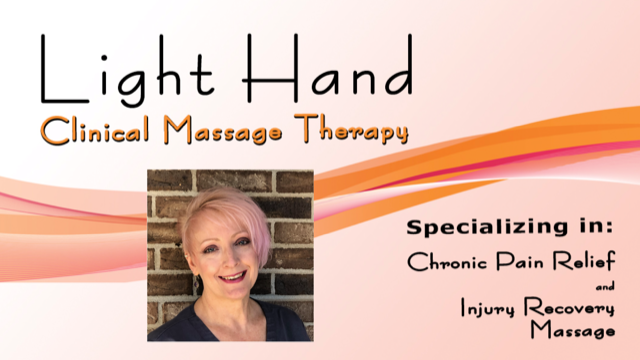Neuromuscular Side Effects of Pharmaceuticals: A Barrier to Receiving Therapeutic Massage

Pharmacology for massage therapists is typically taught as continuing education, after a massage therapist’s career has begun. Course content details when massage therapy is contraindicated (advised against) or should be altered based on the medications a client is taking.
For example, clients taking anticoagulants should receive only the lightest of massages -- if at all -- because massage increases vasodilation and intravascular blood circulation, and may lead to bruising in such clients. Muscle relaxants such as Flexeril, e.g., and even analgesics such as ibuprofen, impede the client’s ability to feel pain or give accurate feedback, so Deep Tissue massage and stretching is inappropriate for clients with these drugs in their system.
Moreover, the amount of a drug in a client’s body can impact the response to massage, and so should be considered when timing/scheduling a massage. The efficacy of the antacid/ulcer drug Tagamet, for example, peaks 45 to 90 minutes after ingestion and lasts between four and five hours, with a side effect of dizziness, among others. In general, massage is best scheduled when drug levels are low in a client’s system.
A massage therapist’s pharmacology knowledge is focused on risk factors so that massage can be given safely and without harm. But I want to discuss something else, something which I believe doesn’t get enough attention.
The neuromuscular side effects of pharmaceuticals are rarely discussed, yet they impede therapeutic massage. Ignoring this fact poses a risk to the muscles of both client and therapist, and undermines the profession in that getting a massage can be, in certain cases, rather a waste of money.
For example, the entire class of antidepressants known as SSRIs (Selective Serotonin Reuptake Inhibitors) have neuromuscular side effects including tremor, specific and diffuse muscle pain, hyperesthesia (high sensitivity to touch), paresthesia (numbness and tingling), hypertonia (excessive muscle tone), and hypoesthesia (dulled sensitivity to touch). The last two side effects, which may present together in a client on Zoloft, e.g., help indicate why Deep Tissue massage has become so aggressive, and why too much massage therapy is ineffective today, regardless of technique. Clients ask us to “go deeper” and say “you can’t hurt me” because their muscle tissue is like rock (hypertonia) but they’re numb (paresthesia, hypoesthesia)! Or, conversely, their muscles hurt (as a drug side effect) but they can’t tolerate deep work (hyperesthesia), and they leave the massage still hurting. Deep Tissue massage is actually contraindicated for clients on Zoloft, given its side effects, yet the Deep Tissue massage often occurs anyway. Why?
Neuromuscular side effects of drugs are of little concern to both doctor and patient, seen as a minimal price to pay for the drug’s main intent. Clients on medication dismiss its import for massage in general. Moreover, prescription medication is still a taboo subject in certain massage environments. The spa industry’s intake forms request information on clients’ prescriptions, but omitting that information doesn’t prohibit clients from receiving massage services. Clients on medication for mental health reasons may be embarrassed or uncomfortable revealing that information. In my experience, employed massage therapists often simply don’t know what drugs are coursing through the bodies of their clients. In some cases, therapists are at risk of straining their hands on muscle tissue rendered incapable of yielding, and the therapy is largely ineffective, if not harmful to the client’s tissues.
Over the span of my career, I’ve witnessed increasingly that pharmaceutical side effects are a primary impediment to muscles responding normally to massage. I can create a relaxing environment, help your parasympathetic nervous system take over, perhaps help your brain waves drop into alpha state, and apply my skilled hands to your muscles and fascia, but I cannot override the neuromuscular side effects of the drugs you’re taking. Worse, clients (and therapists) who’ve never received massage without an SSRI in their systems have no idea what’s truly possible through massage therapy without the barriers these drugs’ side effects pose. I don’t need to tell you that prescriptions for SSRIs have increased significantly since I graduated massage school in 2001, but here are a few statistics anyway.
In addition to SSRIs, other commonly-prescribed pharmaceuticals with neuromuscular side effects include ACE inhibitors, such as Lisinopril, used to treat high blood pressure and heart disease. Side effects include muscle cramps, numbness and tingling, and low back pain. Other antihypertensives can cause muscle and joint pain.
When a client’s main neuromuscular complaint is actually a drug side effect, is massage therapy worth it?! 🤔
Lastly, although perhaps not as obvious, be aware of the long-term side effects on muscles, fascia, tendons, and joints of the following common prescription drugs.
Corticosteroids can cause muscle, tendon, and ligament weakness after several weeks’ use.
Metformin, used to treat diabetes by lowering blood sugar, interferes with your muscles' use of glucose for energy, leading to general muscle weakness.
Statins, used to lower cholesterol, such as Lipitor and Crestor, degrade muscles, tendons, and joints over time.
This post concludes my series on modern barriers to receiving therapeutic massage. Prior posts covered chronic inflammation and unresolved trauma. In these past nine years marked by high anxiety from political division and pandemic trauma, I’ve become quite disheartened at the efficacy of massage therapy in general and the applicability of my holistic training in Deep Tissue in particular. This led me to seek completely new training which better allows for all three barriers. I’m pleased to soon be offering a new treatment which leaves the client not only feeling better immediately, but empowered in recovering oneself as a healthy, whole being. Stay tuned!
Sources:
CDC: National Center for Health Statistics. www.cdc.gov/nchs
Massage & Medications: When is Therapy Dangerous? AMTA-approved continuing education course written by Jeannette Vaupel, RN, LMT. Earned online 31 August 2022. www.amtamassage.org/continuing-education
U.S. Pharmacist. 14 May 2024. www.uspharmacist.com
Wible, Jean. Drug Handbook for Massage Therapists. Lippincott Williams & Wilkins, 2009.





Member discussion